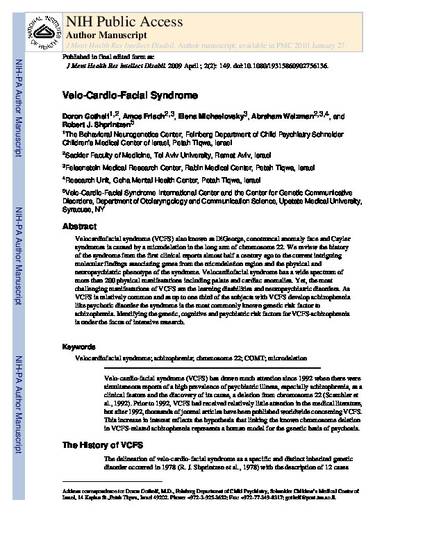
Velocardiofacial syndrome (VCFS), also known as DiGeorge, conotruncal anomaly face, and Cayler syndromes, is caused by a microdeletion in the long arm of Chromosome 22. We review the history of the syndrome from the first clinical reports almost half a century ago to the current intriguing molecular findings associating genes from the microdeletion region and the physical and neuropsychiatric phenotype of the syndrome. Velocardiofacial syndrome has a wide spectrum of more than 200 physical manifestations including palate and cardiac anomalies. Yet, the most challenging manifestations of VCFS are the learning disabilities and neuropsychiatric disorders. As VCFS is relatively common and as up to one third of the participants with VCFS develop schizophrenia-like psychotic disorder, the syndrome is the most commonly known genetic risk factor to schizophrenia. Identifying the genetic, cognitive, and psychiatric risk factors for VCFS-schizophrenia is under the focus of intensive research.
Gothelf, Doron et al. "Velo-Cardio-Facial Syndrome." Journal of Mental Health Research in Intellectual Disabilities 2.2 (2009): 149-167.
